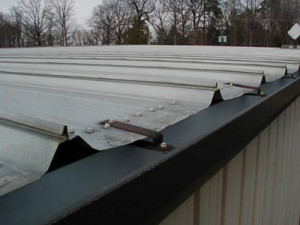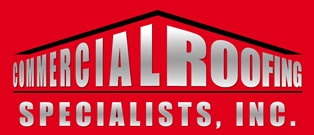SUSTAINABILITY HAS BECOME A HUGE ISSUE IN OUR SOCIETY.
With researchers and scientists learning more about global warming every day, nearly every project undertaken today is at least partially concerned with and aware of its environmental impact. Our roofing materials are no exception: we pride ourselves on manufacturing and promoting sustainable roofing materials and solutions.
What Makes Up Sustainable Roofing Materials?
Sustainability is defined by Webster as “being a method of harvesting or using a resource so that the resource is not depleted or permanently damaged, or…relating to a lifestyle involving the use of sustainable methods.” So how does that relate to roofing?

Well, there are several ways a commercial roof can be sustainable:
- The materials used on the roof can be sustainable, easily obtained, containing recycled content or easily biodegradable once removed.
- The commercial roof itself, once installed, can be sustainable; with the materials used providing a higher quality, longer life. This reduces the impact on the environment by keeping tons of roof waste out of our landfills and provides significant long-term savings to the owner.
- The roof structure can be used to collect resources, such as water or sunlight.
- The color of the roof can be altered to minimize energy use.
What Are Some Sustainable Roofing Materials?
Some of the most common roofing materials used on commercial buildings today are metal, concrete, tar and gravel, EPDM/TPO, living roofs, and roof coatings. What properties do these materials possess, and are they sustainable or untenable?
Metal
Metal roofs are extremely common in the US, and for good reason. They often last more than 50 years and provide excellent protection from the elements. They demonstrate extreme strength in high wind, hail and rain. They also have a long track record of use and success in the US. Metal roofs also require little maintenance, as long as that little amount of maintenance is performed. If the roof is neglected and gets out of hand, they are hard to salvage and oftentimes require complete replacement, which leads us to the downfall of metal roofs. Although these roofs have long life expectancies, they can fail early and require sooner than expected replacement. Whether they last 50 years or only 15, when they are replaced, there is a great deal of waste sent to landfills, and a great deal of time and effort is required to replace them. Metal roofs are a hassle at installation and removal, and most people try to avoid replacement at all costs. Because of their high replacement costs, metal roofs are not a very sustainable roofing material.
Concrete
Concrete roofs are surprisingly lightweight. Since they are concrete, one would expect them to weigh a lot. However, thanks to the small need for support and reinforcements, concrete roofs are fairly light. These roofs are also fire resistant which is a nice feature. Concrete roofs require even less maintenance than metal roofs. They don’t require much effort to maintain. Unfortunately, they can be quite expensive and can greatly vary in quality, price and performance depending on the manufacturer and the product. As far as sustainability goes, these are a notch above metal roofs because they have a significantly longer life. However, they still send large amounts of waste to landfills at the end of their useful life, meaning they aren’t a completely sustainable roofing material.
Tar and Gravel
Tar and gravel roofs are the least sustainable roofing material on this list. They are dangerous to install, can cause adverse health effects to those in close proximity during install, and the fumes put off but the roofing material promote smog. While the gravel can be reused when the roof is removed, the rest is waste. The benefits associated with this roofing system are that it is inexpensive and extremely easy to repair. It is also a great insulator, better than metal or concrete, which does help its sustainability rating. However, the other factors outweigh the benefits and it is not sustainable according to our standards.
EPDM/TPO
Both of these roof types, especially EPDM, have been growing rapidly in popularity in the US in recent years. One reason for this growth is that these roofs are extremely lightweight, which means they don’t require heavy reinforcements to the roofing system. They are also extremely cost effective, as they are inexpensive roofing systems that also provide great insulation and a long useful life. These are extremely sustainable roofing systems, made of reclaimed roofing materials, with a life of 30-50 years, and great insulators, these roofs satisfy most of the things we look for when analyzing sustainable roofing materials. The only downside to these roofing systems is that they are relatively new to the market, which means they are still untested and it is unsure how they will perform after a long time on the roof exposed to the elements.
Spray Polyurethane Foam
Also known as SPF or Spray Foam, this is one of the most sustainable roofing materials on the market. SPF roofs can be installed during the construction phase of a building as the first roof installed on the building, or they can be installed over top of an existing roof as the second roof installed on the building. Because they can often be directly applied to the existing roof surface, there is no tear-out required which means no waste in the local landfills.
SPF roofs also offer the highest R-values of any roofing system available today, meaning they will save you big on energy bills. Combine their energy savings with the waterproofing, strength, and over 40-year lifespan and you are looking at an extremely sustainable roofing material. SPF roofs are great for any building owner looking to install a sustainable roofing system.
Roof Coatings
Roof coatings are also a fairly new player in the roofing market, but they have a much longer track record than EPDM or TPO roofs. Coatings have been used in roofing applications since the 1960’s, but the materials that make up most of these coatings, such as silicone, have been around much longer than that. These roofs are extremely reflective, and they improve the energy efficiency of the buildings they cover because of that. They can be installed in one coat, without a primer, directly to the roof surface. The small amount of materials and labor required make coatings extremely sustainable. Coatings also have long useful lives that don’t require tear-off at the end, but recoat. That makes them a great choice as far as sustainable roofing materials are concerned.
Conclusion
This was only a short summary of the roofing materials available to you as a building owner. There are many more that should also be considered. If you want to learn more, check out some of our other blog posts or give one of our salesmen a call. Thanks for reading!
